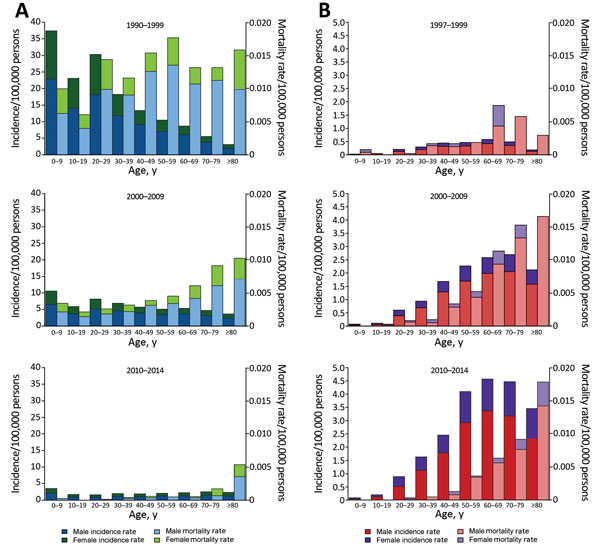Volume 23, Number 2—February 2017
Dispatch
Changing Epidemiology of Hepatitis A and Hepatitis E Viruses in China, 1990–2014
Figure 2

Figure 2. Age distribution of patients with reported cases of A) hepatitis A (blue, male patients; green, female patients) and B) hepatitis E (red, male patients; purple, female patients) in China for 1990–1999, 2000–2009, and 2010–2014. Incidence and mortality rates were calculated in 10-year age groups for the 3 periods. For each color, the darker shade represents incidence and the lighter shade represents mortality rate.
1These authors contributed equally to this article.
2These authors are joint senior authors.
Page created: January 17, 2017
Page updated: January 17, 2017
Page reviewed: January 17, 2017
The conclusions, findings, and opinions expressed by authors contributing to this journal do not necessarily reflect the official position of the U.S. Department of Health and Human Services, the Public Health Service, the Centers for Disease Control and Prevention, or the authors' affiliated institutions. Use of trade names is for identification only and does not imply endorsement by any of the groups named above.